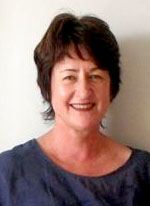 |
| Prof. Mabel Erasmus |
The University of the Free State (UFS) has received a research grant to the value of R1,1 million from the National Research Foundation (NRF) to conduct research on community engagement, with the emphasis on knowledge as enablement – a Non-Profit Organisation (NPO) focus.
This was the first time the NRF had requested applications for research with a focus on community engagement (CE). With the grant, the UFS has become one of the first recipients of a research grant that focuses on community engagement.
The overarching research question that will be dealt with is how Higher Education Institutions (HEI) and the NPO sector can establish long-term, research-based collaborative engagements that will be mutually empowering and enabling through joint, reciprocal knowledge-based activities and capacity building.
The contention that this proposal is based on, is that HEIs have limited knowledge of the NPO sector and thus are unable to be fully responsive to the challenges that NPOs face. What is more, it is very likely that staff and students from HEIs do not have an adequate grasp of the experiential understanding, contextual community knowledge and practical know-how that NPO practitioners have, and hence do not appreciate the crucial contributions that they can make with regard to meaning-making processes aimed at improving some of the harsh South African realities.
According to Prof. Mabel Erasmus, Associate Professor and Head of the university’s Division: Service Learning, which submitted the research proposal to the NRF and is the grant-holder, the university would like the information generated by the research to be beneficial to both HEIs and the NPOs. “Knowledge regarding NPOs, specifically their challenges and information about what they are doing, will be invaluable to HEIs. At the same time, the research must benefit the NPOs with knowledge to improve their practice and strengthen their functioning.
“The research will take place in close collaboration with the NPOs, as their inputs are crucial. The research will thus not be ‘about’ them but ‘with’ them.”
“We do not want to send our students for community-based education or as volunteers to NPOs year after year and it does not mean as much to them as these organisations would hope for. With the research process we would like to strengthen NPOs, to build their capacity and give them our whole-hearted cooperation,” she said.
Funding received from the grant will be applied over a period of three years. Except for the study grants for five Ph.D. students and four master’s students, the grant will further make provision for a number of workshops, a local conference, a publication and presentations at international conferences on this matter. The research team of 22 persons includes academics from other HEIs such as the Central University of Technology, University of Zululand, University of Johannesburg and Monash SA. Several staff members of NPOs also form part of the team, including REACH (Bfn), Childline (FS) and others.
Prof. Erasmus said that the UFS was one of a few institutions that were currently conducting research to this extent on the link between the NPO sector and HEIs within the field of community engagement.
Media Release
18 January 2011
Issued by: Lacea Loader
Director: Strategic Communication (actg)
Tel: 051 401 2584
Cell: 083 645 2454
E-mail: news@ufs.ac.za